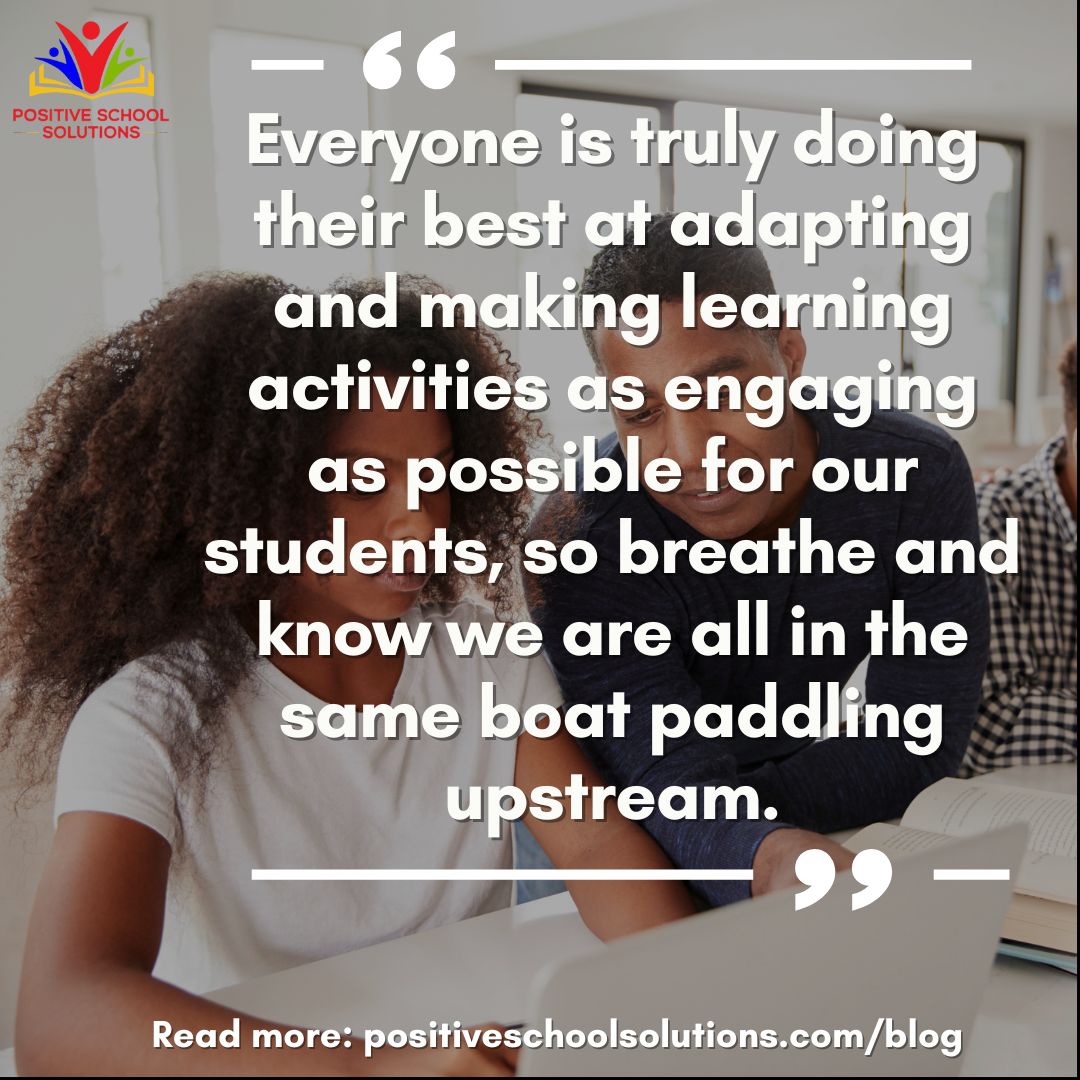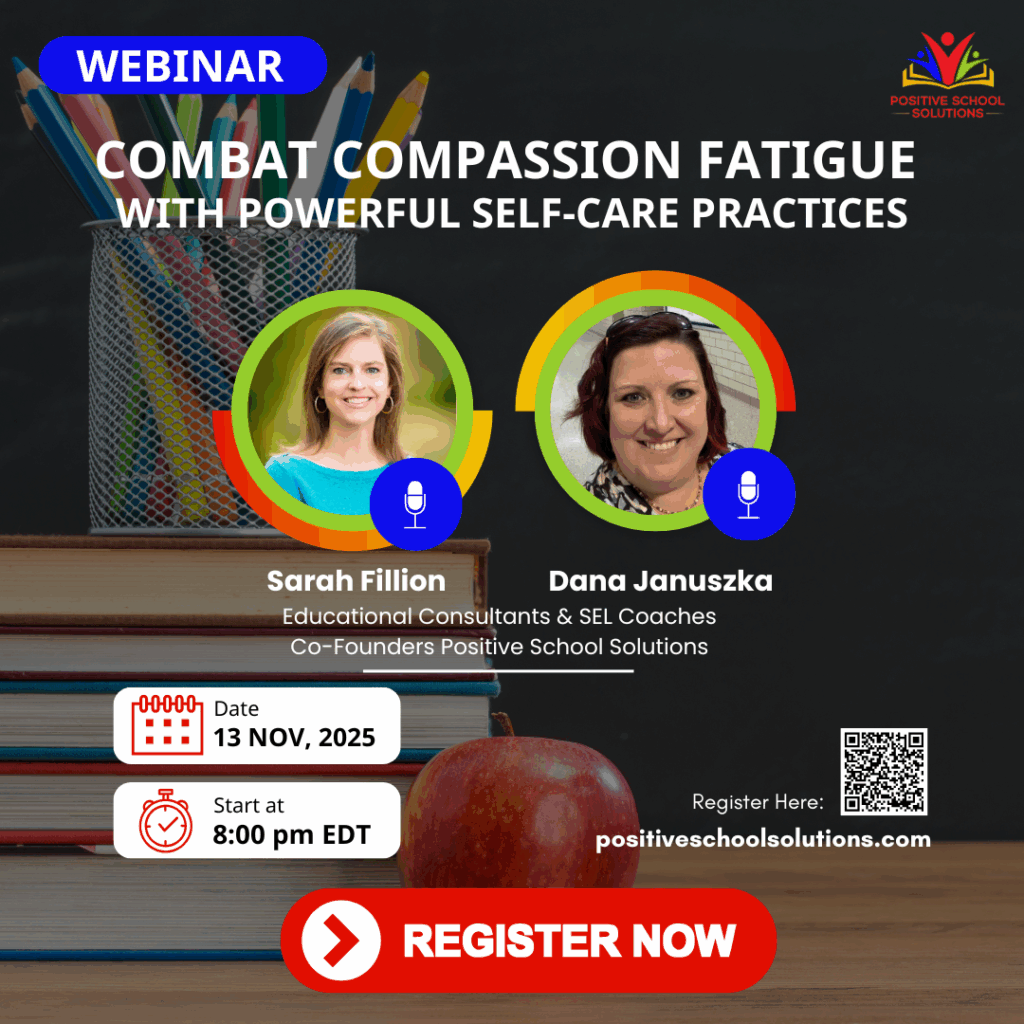 As an educator and parent of both an Elementary and Middle School student, I thought online learning would be no problem. What I quickly realized, however, is that transitioning from in-person to online brings many challenges to the surface. How will I make sure the kids are on task so we don’t end up with a pile of work at the end of the work day? How are all four people in our house going to share wifi throughout the day? Will the adults be able to get any work done? Where will everyone sit so they have their own quiet workspace? It seems as the time passes, there are only more and more questions and challenges… compounded by the challenges of things like missing friends, teachers, and activities.
As an educator and parent of both an Elementary and Middle School student, I thought online learning would be no problem. What I quickly realized, however, is that transitioning from in-person to online brings many challenges to the surface. How will I make sure the kids are on task so we don’t end up with a pile of work at the end of the work day? How are all four people in our house going to share wifi throughout the day? Will the adults be able to get any work done? Where will everyone sit so they have their own quiet workspace? It seems as the time passes, there are only more and more questions and challenges… compounded by the challenges of things like missing friends, teachers, and activities.
While I certainly don’t have all the answers, over the last 9 months I have learned from many mistakes, conversations, and research about what we, as parents, can do to help to make online learning successful for our children. For parents reading, continue on! Hopefully my learning will help create success in your home. For teachers reading, share this with families to help ease the transition and keep the learning momentum.
Designate A Learning Space
I know even for me having a space to go “to work” makes all the difference in my motivation. Laying in bed doesn’t really make me want to do research or develop a new course – but sitting in a chair, at the computer, makes me feel like it’s time to “do the work” as my nephew would say. Children don’t need a fancy new desk, or an office all to themselves – rather just a place where they can sit, see their computer, and have a surface for papers or whatever the school sent home to support their learning. My own girls share a table space, but we set up tri-fold project boards between them to cut down on the distraction of making silly faces at each other. Each one then taped up their school schedule and log-ins to the boards to make things as easy as possible. Having this easily accessible cuts down the number of times throughout the day my 4th grader comes to ask which class she should be on or how to log in to a specific website. Having a designated space helps each of my girls focus on the work and allows the rest of the house to remain feeling ‘non-school’ like.
Limit Distractions
This is one of the most challenging pieces I find at home. So often when I log into Zoom meetings for the teachers I am coaching this year, often the students have televisions on in the background or right next to them. My middle schooler is often quick to close my office door (with an eye roll, of course) if I am talking on the phone “too loudly” for her. Did you know that it takes an average of 23 minutes and 15 seconds to get back to a task when you are interrupted? We have to be cognizant of what is happening in our homes that might seem like a simple and mundane task to us, but can easily pull students away from the screen and make it hard for them to refocus. One thing that works well for us is having them silence their other devices and put them in the kitchen during live sessions so they can be focused. We also have created instrumental music playlists (the Disney piano music is our favorite!) that we play in the background helping to quiet the everyday house noises while creating a peaceful atmosphere for learning.
Create A Schedule
For schools where digital learning is synchronous, creating a schedule is usually easier – kids are in class from the start of the school day until the end of the day. For those who have asynchronous days, a challenge can be getting our kids started and keeping them focused throughout the day. In our house, we find that having a schedule that says the hours they are to be working and those they have off is important, especially for our middle schooler. This allows her to know that work time is from 8-11, but then from 11-12 she can have her FaceTime lunch/dance parties with friends (aka social time.) Knowing that time is coming allows her to focus more during work time instead of wondering where everyone is and what they are working on. When setting up a schedule, keep in mind that typically students can actively focus for about one minute for every year old they are, and then they might need to move their body to stay engaged. So definitely build in break times throughout the day, even to walk a lap around the house (inside or out) – or one of our favorites – stair climbing. They race up and down the basement stairs to see who can get more reps in. Simple, but effective!
Check In With Your Child
I know it sounds like “checking in with your child” should be obvious, but as a working parent, I will fully admit – it’s easy to forget, especially if they are quiet and seem engaged in learning! I found I have to set alarms on my phone so that every hour I go check in with them – see how they are doing with their academic work, as well as how they are holding up emotionally. Sometimes when I do a check-in, I find they need a water or stretch break. Other times, I find they are engaged in their learning and I can just go back to my own task. I find that on the days when I check in routinely, it eliminates the challenge at the end of the day when class is over, but they still had a list of tasks to complete because they had lost focus.
… But Don’t Be A Helicopter
So I know I just said to check in… but don’t linger. Remember that a huge part of what students are learning throughout their school day is how to be independent and responsible. If you find they are struggling, show them how to (appropriately and respectfully) email the teacher and ask for help on their own. This is easier with the older students, but even for our younger students, reaching out to someone via email is an important skill they will use for years to come! My experience with remote learning has definitely shown me that when the teacher needs support with my child, they will absolutely reach out and let me know, so give yourself the space to step back and give them room to grow and learn.
And finally, communicate with your teacher. I know it’s been said a hundred times before, but we truly are all in this together (que High School Musical song here.) Remote learning is new to all of us – parents, teachers, and kids. So if you have questions, ask! Keep in mind that your child’s teacher might be teaching in that moment, or meeting with a student, or in a team/faculty meeting – so be patient in waiting for a response. On the flip side, when you witness the lightbulb going off for your child, or you hear them talking about something awesome they did in class that day – take a moment to send the teacher a note and let them know how exciting it was. Everyone is truly doing their best at adapting and making learning activities as engaging as possible for our students, so breathe and know we are all in the same boat paddling upstream. This is certainly a year none of us will forget, and hopefully some of these tips will help your ride be a little smoother.
Written by Dana Januszka and Sarah Fillion for Positive School Solutions 2020

